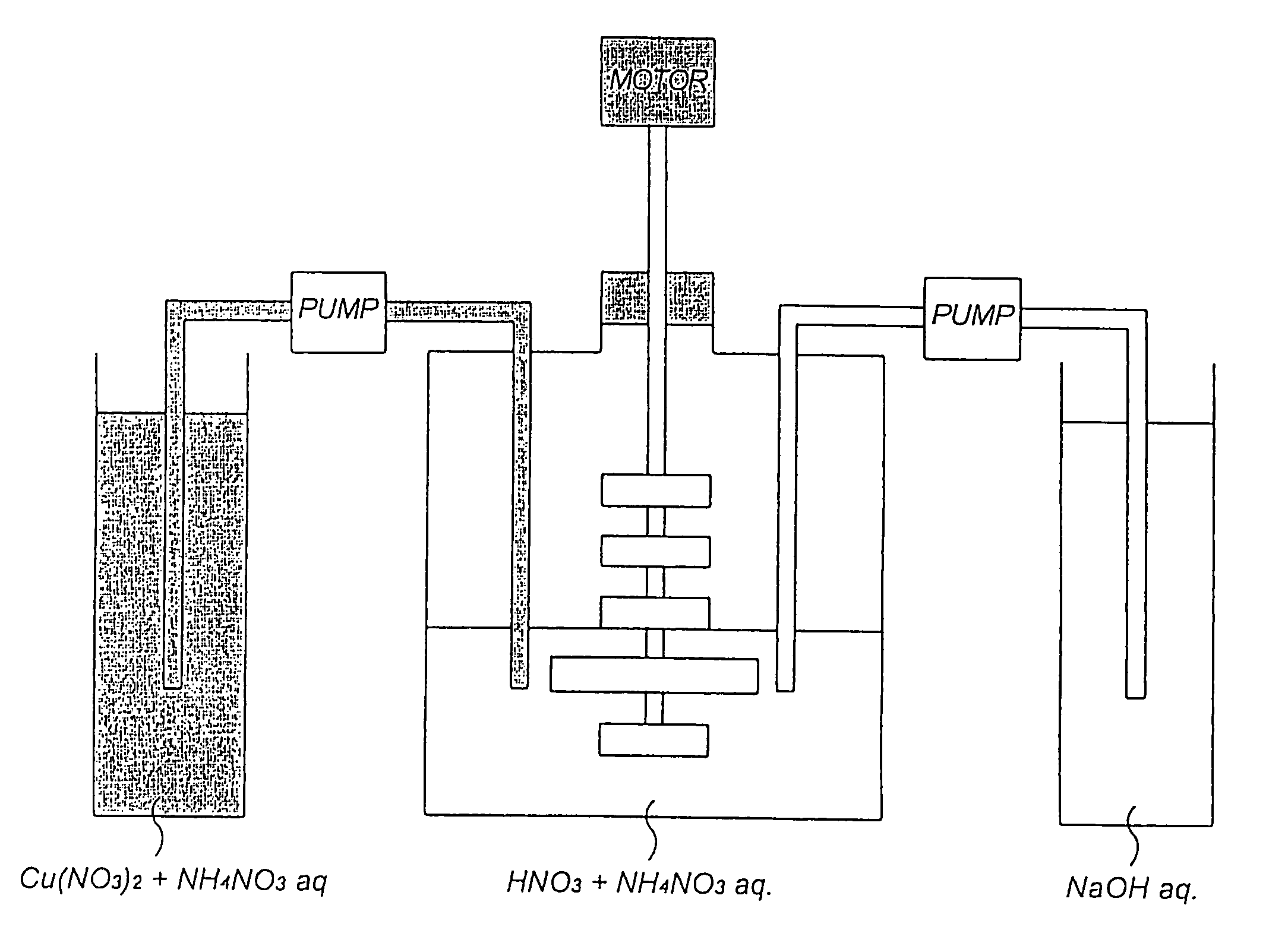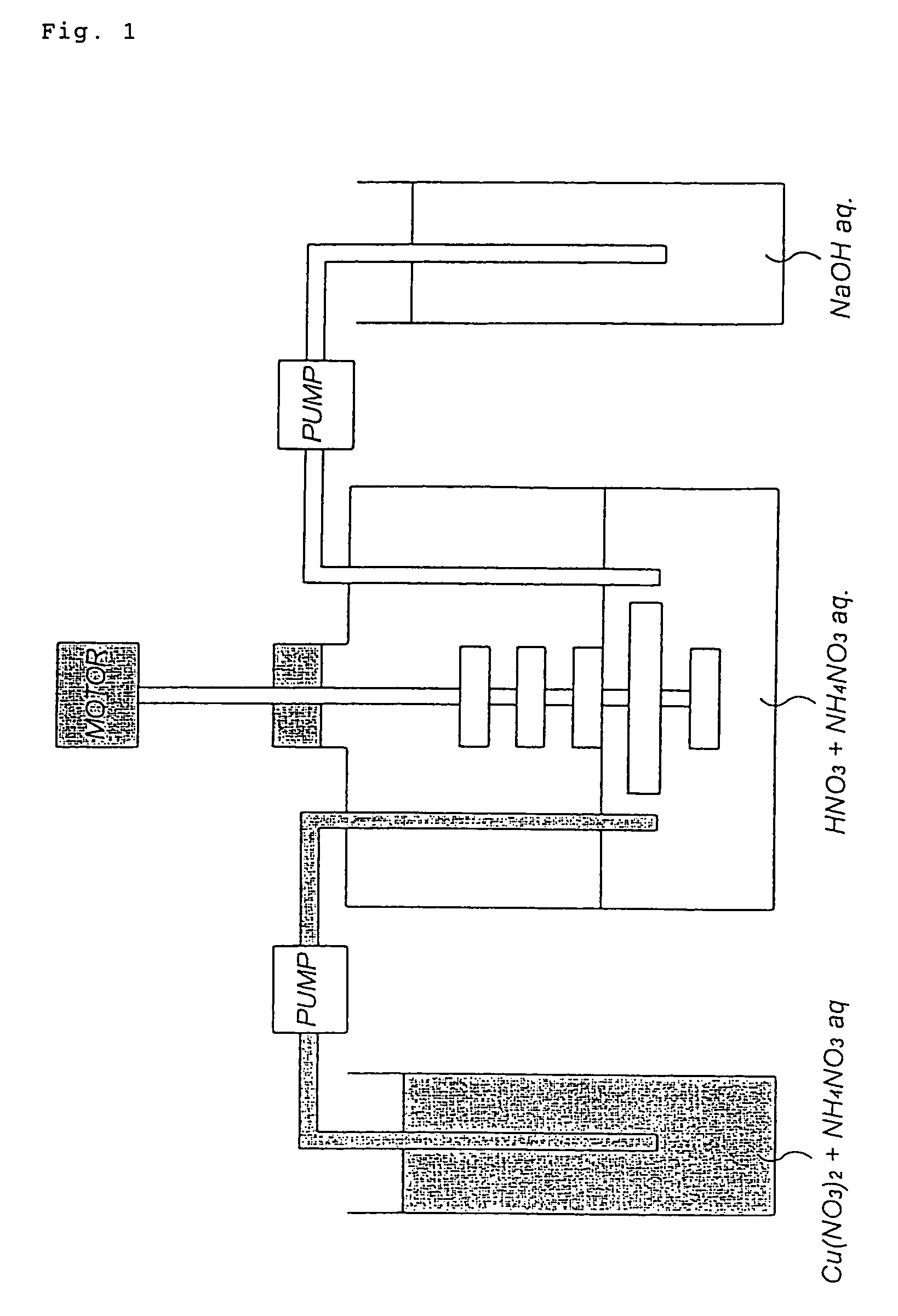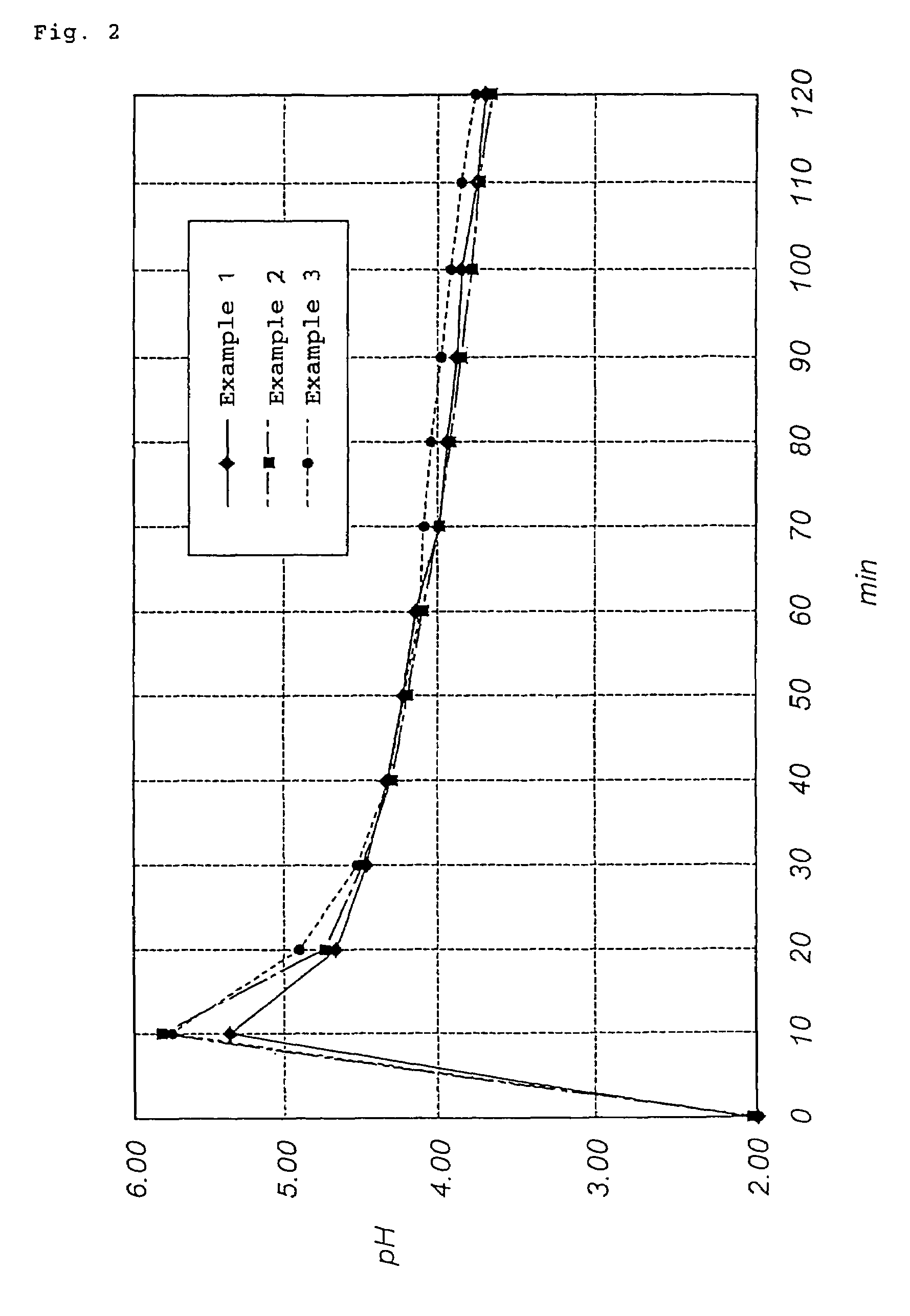Method for producing basic metal nitrate
a technology of basic metal nitrate and nitrate, which is applied in the direction of lithium nitrate, magnesium compounds, lithium compounds, etc., can solve the problems of difficult to utilize the same industrially, difficult to fix the color and a crystalline state of the resulting basic copper nitrate, and achieve good efficiency and high yield
- Summary
- Abstract
- Description
- Claims
- Application Information
AI Technical Summary
Benefits of technology
Problems solved by technology
Method used
Image
Examples
example 1
[0040]As shown in FIG. 1, a basic copper nitrate was produced using a 5-liter reaction vessel fitted with a stirring unit comprising a total of 5 stages of cross blades (the length of the cross blade at the fourth stage from the top is approximately 1.5 times that of the other cross blades which are of the same length). Incidentally, 1 liter of a 0.5% by weight of ammonium nitrate aqueous solution whose pH at 20° C. had been adjusted to 2.23 with nitric acid was charged into the reaction vessel as a reaction solvent.
[0041]First, while the reaction solvent was stirred at 95 rpm by actuating the stirring blades, 6,000 parts by weight of copper nitrate 3-hydrate and 66 parts by weight of ammonium nitrate were added to 2,800 parts by weight of deionized water so that copper nitrate 3-hydrate reached 18% by weight calculated as copper and ammonium nitrate 0.75% by weight respectively. While the mixed aqueous solution (the concentration of copper nitrate in the aqueous solution was 53% by...
example 2
[0044]A basic copper nitrate was produced in the same manner as in Example 1, provided the pH of the reaction solvent before starting the reaction was 1.97 and the reaction time was approximately 24 hours. The resulting basic copper nitrate was weakly agglomerated, primary particles were in the form of bluish green rods (prisms), and a primary particle diameter was 0.5 to 3 μm. The yield based on the charged starting material was 99%. By the way, the maximum pH value of the reaction system at the initial stage of the reaction was 5.90. As the reaction proceeded, the pH was decreased, and reached 3.72 after approximately 2 hours. The change in pH of the reaction system with time from 0 to 120 minutes is shown in FIG. 2.
example 3
[0045]A basic copper nitrate was produced in the same manner as in Example 1, provided the pH of the reaction solvent before starting the reaction was 2.05 and the reaction time was approximately 24 hours. The resulting basic copper nitrate was weakly agglomerated, primary particles were in the form of bluish green rods (prisms), and a primary particle diameter was 0.5 to 3 μm. The yield based on the charged starting material was 100%.
[0046]By the way, the maximum pH value of the reaction system at the initial stage of the reaction was 5.72. As the reaction proceeded, the pH was decreased, and reached 3.85 after approximately 2 hours. The change in pH of the reaction system with time from 0 to 120 minutes is shown in FIG. 2.
PUM
| Property | Measurement | Unit |
|---|---|---|
| temperature | aaaaa | aaaaa |
| time | aaaaa | aaaaa |
| temperature | aaaaa | aaaaa |
Abstract
Description
Claims
Application Information
 Login to View More
Login to View More - R&D
- Intellectual Property
- Life Sciences
- Materials
- Tech Scout
- Unparalleled Data Quality
- Higher Quality Content
- 60% Fewer Hallucinations
Browse by: Latest US Patents, China's latest patents, Technical Efficacy Thesaurus, Application Domain, Technology Topic, Popular Technical Reports.
© 2025 PatSnap. All rights reserved.Legal|Privacy policy|Modern Slavery Act Transparency Statement|Sitemap|About US| Contact US: help@patsnap.com



